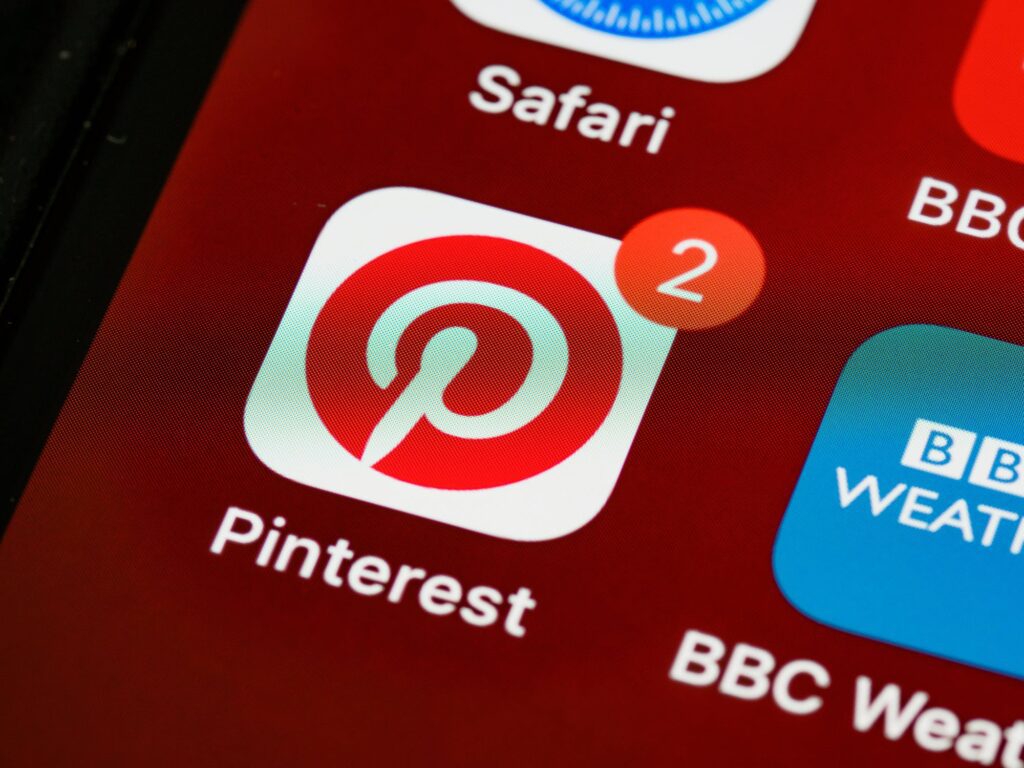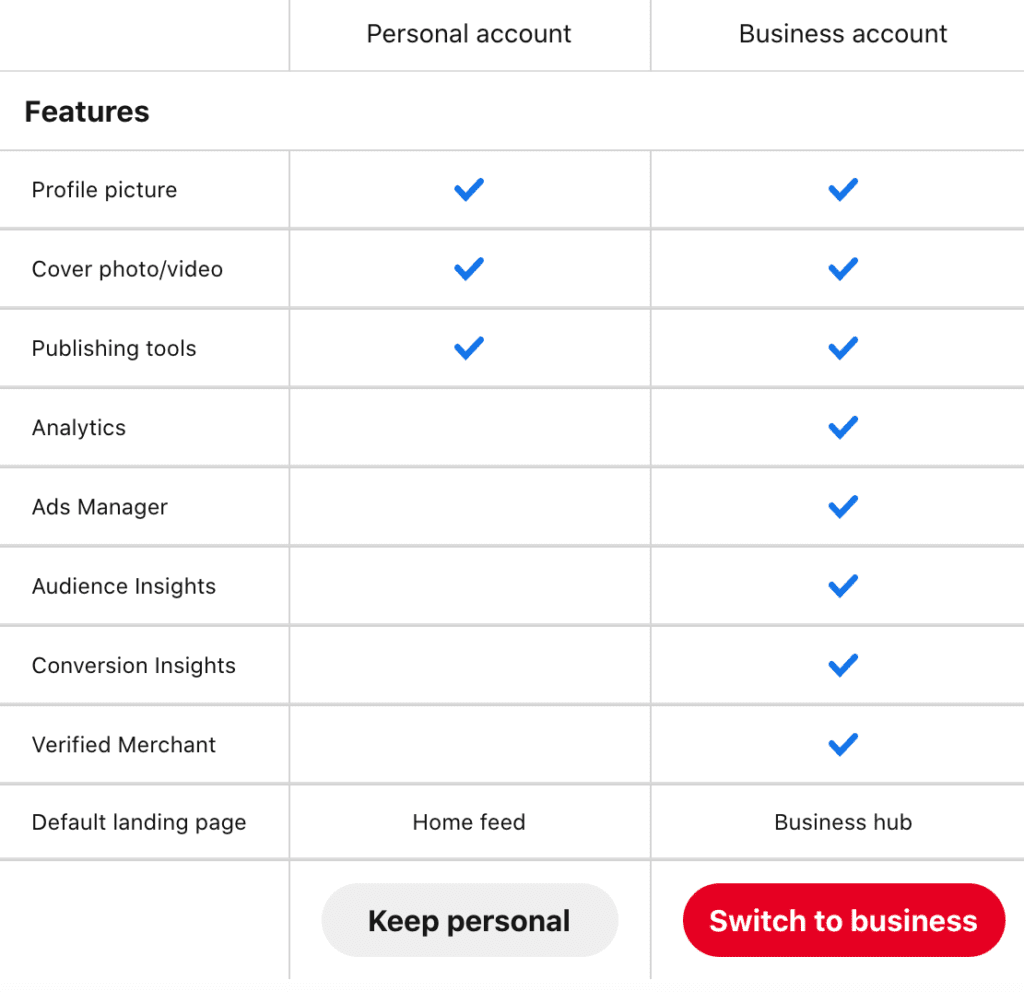You have to stay ahead of the game if you want to get your message in front of the right audience, generate leads, increase conversions and build awareness around your brand. With over 450 million monthly users and a growth of 100 million in the last year alone, Pinterest marketing is quickly becoming one of the most lucrative ways to do just that.
Pinterest is different from other platforms. It allows the user to find a myriad of inspiring visual content which they can explore, share and set aside. To be successful in your Pinterest marketing, you need to have a clear grasp of how the platform works.

In this guide, we’ll take you through how Pinterest works and why it’s valuable to market on this social media platform.
How does Pinterest work?
Think of Pinterest as a search engine for visual content. The audience can search for content within the platforms search bar, and, like a search engine, they are served a list of relevant images to explore. Users discover and save – or “pin” – content to different boards according to a theme, category or idea, the way you would on a real-life pinboard. It helps the user keep their content organised and makes it easy for other users to see and discover their “pinned” content.

Perhaps you’re wondering how else your content will be seen if it’s not searched directly? The user is exposed to new content on the home page based on their interests, previous actions, top picks or previous searches, opening a range of marketing opportunities for many businesses. If that’s still not enough for the user, they can click on the “more ideas” tab which will reveal even more magical content to delve into.
Now that you’ve got an idea of how Pinterest works, let’s dive into the many reasons why Pinterest marketing is a great idea for many businesses.
Why it’s valuable to market on Pinterest?
Firstly, let’s jump straight into some statistics that shouldn’t be ignored. According to the latest figures from Sprout Social, 89% of users use Pinterest as purchase inspiration and 85% of users say they have bought something based on pins they’ve seen. Those are some very healthy-looking statistics if you’re considering using the platform for marketing for your product-based business!

If you still need more convincing, then the following advantages might give you more food for thought.
Drives traffic – Unlike similar platforms, such as Instagram, Pinterest encourages users to share links that drive traffic directly to your website. This means that when a user finds a visual pin that they like, Pinterest prioritises content that has links embedded in the description and favours backlinking. This is great for growing brand awareness.
It’s great for SEO – You can easily add keywords to your boards, descriptions, titles and bio which makes your pins easy to find with Google. Use your target keywords in your Pinterest boards and descriptions to increase organic traffic and ranking.
Increases sales – As you can see from the statistics, Pinterest users have high commercial intent, and this product-driven social media platform outperforms Facebook when it comes to driving sales.
It loves your brand being seen – The Pinterest app is built to work seamlessly on both desktop and mobile, and no functions are limited on either. This makes the user experience undeniably smooth and encourages users to get lost on the app for hours. If you’ve used the app before, then you’ll know exactly what we’re talking about. The more time a user spends on Pinterest, the more opportunity for your brand to be seen.
Now that we’ve covered all the advantages of marketing on Pinterest, let’s see if this is the correct platform for your business.
Is Pinterest right for your business?
Before you set up a Pinterest account, you need to see if the juice is worth the squeeze. Who is the audience that you are talking to, and what is it you’re selling? If you’re selling investment policies, we would say that perhaps Pinterest isn’t the best platform for you. For your kind of industry, consider a platform like LinkedIn or get some advice from your trusted marketing team.
Product-based B2C (business to consumer) businesses will have a higher success rate using Pinterest than B2B (business to business). Pinterest shopping grew by 50% since the beginning of 2020, according to an article by SproutSocial. We aren’t saying B2B businesses don’t use the platform, but the average Pinterest user visits the platform to be entertained, learn something new, find a specific product or become inspired by a look or idea.

So, is it worth the effort? Definitely. The platform has a slighter older audience compared to other visual social networks such as Instagram and TikTok. This means that, on average, Pinterest users have a higher disposable income and are willing to invest their hard-earned cash on investment pieces such as furniture or art. So, you are speaking to an audience who has more money to spend and high purchase intent, which is already a major win when considering whether Pinterest is the right platform for your business.
Setting up your account
Now’s the time to make the move and set up your account! For starters, make sure it’s a business account so you can run ads and get all the benefit from Pinterest analytics. Analytics are important insights that you can view to see how your page or pin is performing. Read this blog to see how you should be measuring your social media and what metrics to watch.

Setting up a business account is free and simple to do! Follow these steps to create a Pinterest business account.
Our top tips when setting up your business account:
- Keeping your branding, tone and voice consistent with your other social media platforms and website. This makes it easy for the audience to recognise your brand across all the platforms.
- Help people to find you by matching usernames as consistently as possible on all platforms. This makes it easier for your brand to be found and followed across the web!
- Make sure you follow Pinterest’s terms and conditions and privacy policy to avoid any of your content being reported or deleted. You don’t want all your hard work to be for nothing!
- Connect your other social media platforms to your account to leverage those existing followers.
- Use separate boards according to products, catalogues and capsules.
How to get your pins noticed
Your business account is set up, you’re ready to jump into the world of Pinterest marketing to get your pins noticed. So where is the best place to start? Well, there are multiple ways of doing so and we have listed the easiest ones for a beginner (business) pinner.

Engagement is your secret weapon – The best way to get your pins and profile noticed is to engage with other accounts. Follow, pin, comment, like, share and people will start doing the same. Build relationships with other brands and maintain them.
Add value – People use Pinterest as a platform to be educated, inspired and entertained. Make sure your brand falls into these categories by creating some content that includes:
- Inspiring photography
- Tutorials
- “How-to” videos
- Printable PDF downloads
- Infographics
Add keywords wherever you can – Make sure you have a comprehensive list of strong keywords by doing some keyword research and optimise your copywriting wherever you can. We’re talking about adding them to your bio, account profile, descriptions, titles and image alt text. The more the merrier! As mentioned earlier in this blog, the more Google favours your content, the more chances your brand will be seen.
Share the content love – Share your content to boards for more chances of it being explored by users. The more organised your boards are into themes and categories, the easier it is for the follower to find. You should also consider inviting and adding contributors to your board. This will boost engagement and encourage interaction with new users.
Add hashtags – Consider adding hashtags to your copy. Having hashtags allows your content to be found by a user who is searching for a specific theme or topic. While hashtags are not as important on Pinterest as they are on other platforms, a few hashtags won’t hurt! Never use more than 20 though. Having more than 20 flags your pin as spam and will most likely be removed.
Consider promoting your pins – Every platform favours paid content and Pinterest is no different. Consider paying for your pins to be seen. By promoting your pins, you can set goals and specify your target audience in great detail, right down to the type of device you want to advertise on. Promoted pins work in similar auction-style bidding to PPC (pay-per-click) advertising and your promotion can be shown both in a user’s feed and search results.
Pinterest is not only an incredibly impactful, user-friendly and versatile platform but its rapid growth in the past year is a clear indication that you should be including it in your business marketing strategy. Now that you’re up to speed thanks to our beginner’s handbook to Pinterest marketing, you have all the knowledge you need to go from being a beginner to a winner (business) pinner!







